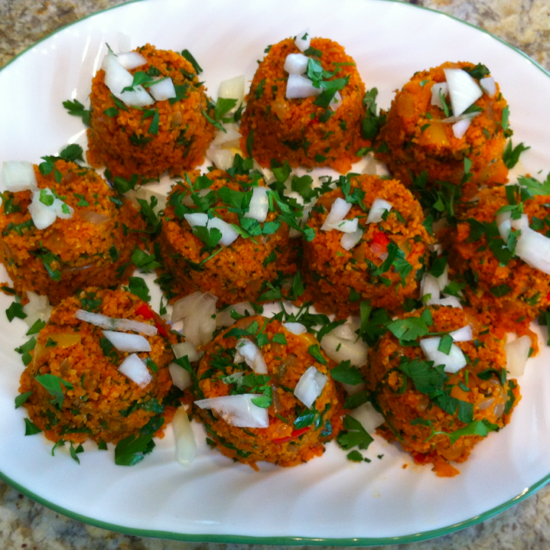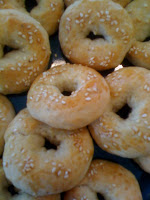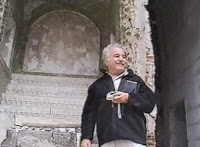We’ve stated early and often that we’re food fanciers not food historians, so we’ve tried to steer clear of claims that any dish is uniquely Armenian.
 |
| From YouTube: Turkish villagers make keshkeg |
Our premise when we began this blog was to embrace as Armenian food anything that Armenians eat.
In my case, of course, that would include hot fudge sundaes — although, it really shouldn’t, for a number of reasons. The lesson is that some things aren’t so easy to define or to avoid.
But identity politics is a powerful thing, and it’s clear that Armenians must define their food or others will define it for us.
There’s been a clear and ominous trend in recent years among our not-always-friendly neighbors to label certain dishes as Turkish or Azerbaijani in origin. Our friend and frequent correspondent, the writer Lucine Kasbarian, brought the latest instance of menu poaching to our attention.
A cultural arm of the United Nations recently certified keshkeg as Turkish. Known by various names, it’s a familiar and filling winter-time stew of mashed wheat and meat, usually lamb or chicken. It has a consistency and appearance similar to oatmeal and is often seasoned with cumin.
Armenians have been making it for centuries. So apparently has everyone else in the ‘hood, with variations, including Persians and Greeks.
There’s nothing odd about that. We know food travels, although its exact path is sometimes hard to trace. But there are real food historians in Armenia, and we’ve noted their efforts to define and refine Armenian food as a distinct cuisine.
They seem certain that the original version sprang from the distinctly Armenian earthen ovens called tonirs. The stove-top pot version —or, in the Old World, the open-hearth version — is an evolutionary step. Turkish cooking, they note, does not include the use of the tonir.
I’m just old enough to remember the lingering euphoria over the UN’s birth after the Second World War and the hope that it would be a major and lasting force for world peace.
I think it’s fair to say that didn’t exactly work as planned. But really, how in the world is it now the UN’s business to be poking its fingers in our soup bowls?





It is NOT the UN's business, you are so right.
Hi – Thanks so much for having this Blog . I'm so happy I found it.I have found so many lost recipes that my grandmother used to make. I am looking for a recipe I love and hope you can help. I would like to make Tahin Hatz. I have a recipe from the Womens Guild but it's designed for fund raising with measurements such as 150 lbs of flour. I have no idea how to break that down as you can imagine !! If you have one and could post it. That would be so appreciated. Aghavni
Hi Aghavni,
If you live in an area with Armenian stores, get it from there. It is by far the easiest option. However, if you don't or you want to make it at home, here is a recipe from "Flavors with History: Armenian Cuisine" (AGBU, 2010), available from Abril Books (http://www.abrilbooks.com/books/12040.html). I am reproducing it verbatim.
Dough Ingredients:
1 tbsp fresh yeast
1.5 cups all-purpose flour
1/2 cup corn oil
1 tsp salt
1 tbsp sugar
1 tsp ground mahleb (pit of the sour cherry)
1/2 tsp baking powder
Warm water, as needed
Filling Ingredients:
Tahini (sesame seed paste, as needed)
3/4 cups chopped walnuts
2 tbsp sugar
1 tsp ground cinnamon
1/2 tsp cloves
Preparation:
Place the flour in a bowl. Place the yeast, previously dissolved in warm water, the sugar, the oil, the salt, the mahleb and the baking powder in the center. Knead well with water until smooth. Cover with a film.
Roll out, making a circle, brush with the tahini and sprinkle the rest of the filling.
Make a hole in the center with your finger and coil the dough from the center to the sides. Place in a round baking pan.
Brush with sweetened water and, if desired, sprinkle with sesame seeds.
Bake in a moderate oven for 40 minutes.
Note: To obtain sweetened water, boil 2 tbsp sugar with 4 tbsp water.
My comment:
The recipe is a little unclear about one point. When you make the hole in the center and coil the dough outward, you are going to end up with a ring. Cut the ring and coil in a spiral. You may flatten it slightly. The finished product looks like a disk.
Also, I don't think my mother used sweetened water. She may have used a little flour instead.
Who invented Pakhlava?
Dolma?
Madzoon?
Lokhum?
Gee whiz… Do they never stop trying to take credit for everything. Your response was most thought, metered and appropriate.
All I know is my grandmother made the best herissa I have ever had.
Let me know when the UN gets around to peanut butter and jelly sandwiches.